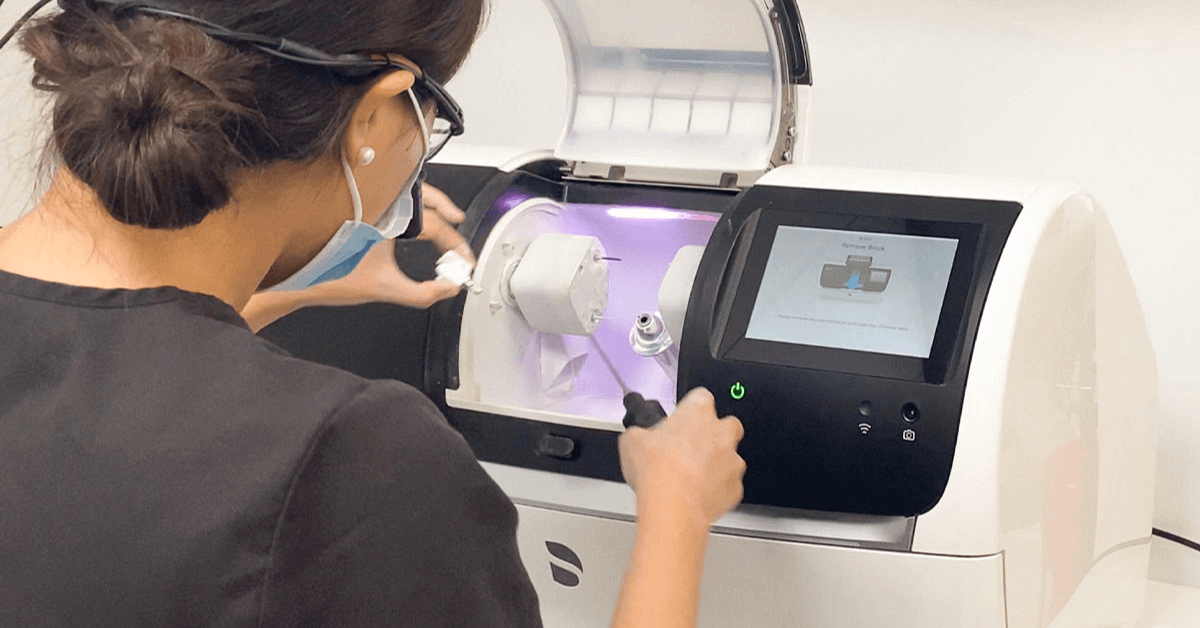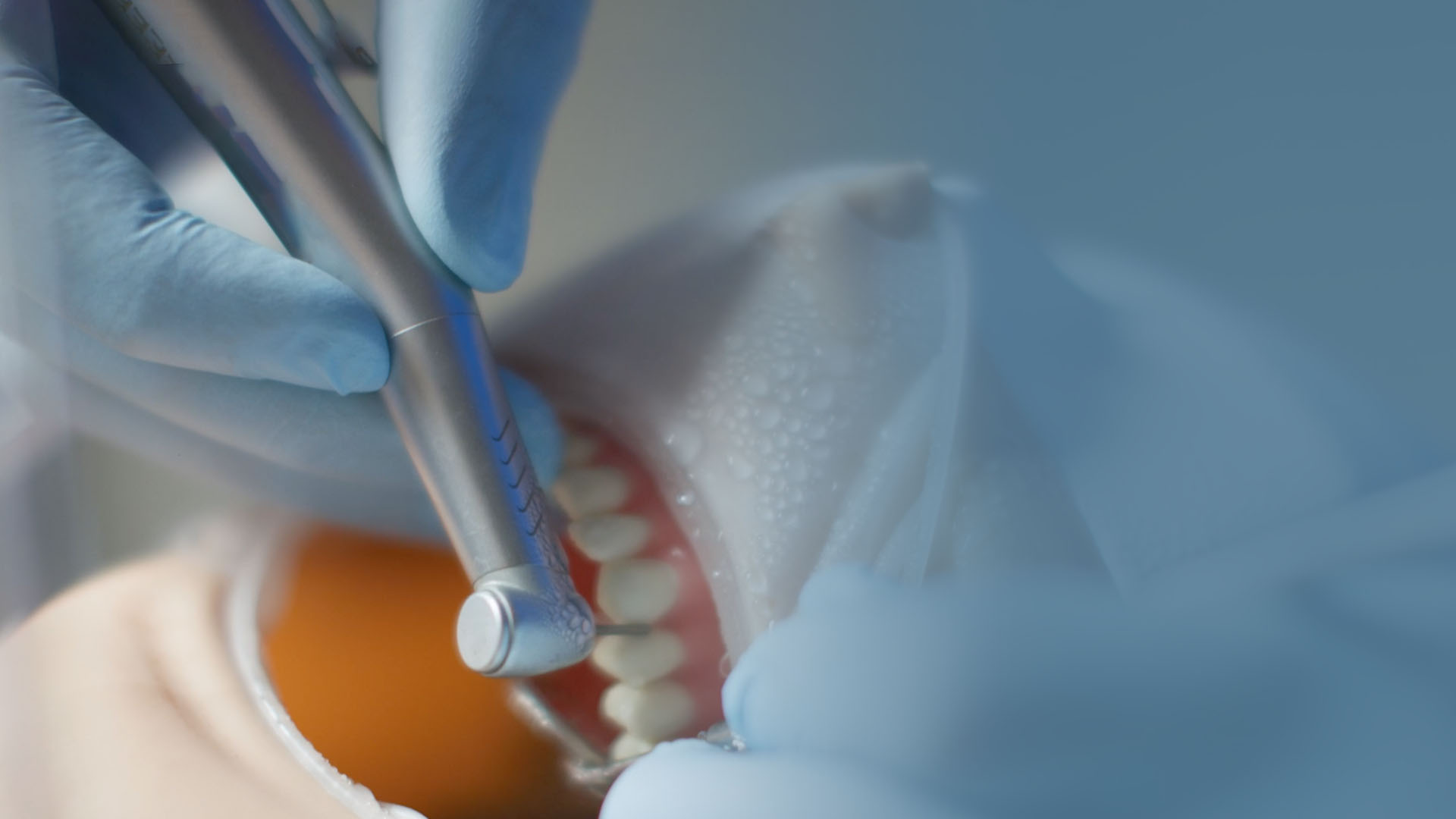New technology has paved the way for innovative dentistry techniques and procedures that were, just a few decades ago, unimaginable. Arguably, advances in dentistry have emerged quicker than in many other medical fields. Scientists are focusing on precision, prediction, safe and effective dental education, and velocity that doesn’t compromise quality. Below, we’ll discuss the top ten technologies in digital dentistry that will likely play a major role in your dental practice.
The Future of Dentistry: 10 Digital Advancements
1. Digital Imaging
Digital imaging facilitates faster exams, inflicts less exposure to radiation on patients, and generates less waste.
This technology relies on intraoral and digital cameras capable of documenting the clinical condition of a patient’s teeth, gums, and mouth using still and moving images. Intraoral digital cameras are small, easy to use, and lightweight. Watch for these digital imaging superstars:
The Canary
This advanced digital imaging device is the size of a toothbrush. It emits pulsing, red laser light when it performs a quick three-second scan of the teeth. It is capable of detecting cavities and small cracks with precision.
S-rays
When FDA approved, they could become the new X-rays. This ultrasonic device is used to map the teeth and gums in 3D, allowing dentists to more easily diagnose cracks and cavities as well as oral and dental diseases.
2. Laser Equipment
Soft-tissue lasers are used for minor gum surgeries, while hard-tissue lasers could soon replace harsh drills to remove decay. Lasers use very small, digitally-controlled mirrors and will make cavity treatment easier and faster for patients.
Lasers cause no bleeding, produce little to no discomfort, and require no sutures. Working with lasers will quicken clinical treatment time and get patients in and out of the chair faster. However, because of the sensitivity of this advanced dental technology, additional hands-on simulated practice is key for transitioning from manual to laser treatment procedures.
3. Digital Smile Design
Digital Smile Design (DSD) creates 3D photos and videos of every angle of the mouth. DSD is perhaps the most head-turning form of digital dentistry because it is a planning tool used to improve diagnosis, predictability, and dentist-patient communication.
Intraoral scanners create digital files that are imported into specialized software.
Dentists can then peruse a digital library of shapes and forms that is transposed on top of teeth to provide a preview of the potential effects of treatment. Such images and videos help the lab produce more realistic models that take facial aesthetics into account.
Patients can work closely with their dentist throughout the Digital Smile Design process. Once they have approved the 3D model and mock-up images, the restoration process can begin.
4. CRISPR
CRISPR is a ground-breaking genome editing method that is set to become a massive benefit to the science of dentistry. Researchers have discovered ways to isolate and switch off oral cancer-associated genes. They are also using CRISPR to alter the functioning of bacteria responsible for plaque formation. This type of alteration could transform the future of dentistry as we know it.
5. Regenerative Dentistry
Regenerative dentistry challenges the preconceived idea that we lose our teeth in the later part of our lives. This science focuses on self-healing teeth and biological therapy for damaged teeth.
Researchers developed dental fillings that allow teeth to heal themselves. These fillings stimulate stem cells to promote the growth of dentin, enabling patients to regrow teeth that were damaged by dental disease.
6. Computer-Assisted Design and 3D-Printing
Computer-assisted design (CAD) and computer-assisted manufacture (CAM) technologies are already considered huge advances in dentistry, making 3D printing a viable tool in a clinic’s digital lab kit.
With CAD/CAM technology, the tooth is drilled in preparation for the crown and a picture is taken with a computer. This image is relayed to a machine that makes the crown in-office.
3D printers can also produce orthodontic models, aligners, retainers, and dental equipment faster and with precision. This improves workflows, reduces error and the amount of labor needed, and — ultimately — makes digital dentistry procedures more cost effective.
7. Virtual Reality
Virtual Reality (VR) closes off the outside world using a dedicated headset that creates a virtual environment for the user. Students and dental surgeons can be transported to the operating room from their kitchen table.
Using a virtual reality camera, surgeons can stream operations across the globe while medical students can experience ‘being there’ in the OR using their VR headset. This is a huge consideration for post-pandemic dental continuing education options.
The technology can also be used to help dentists build on their empathy skills through simulations which gives them an experience from the patient's point of view.
For patients, VR can be an effective distraction tool. In one study where patients used goggles that showed calming scenes in nature, they remembered the treatments more positively afterward.
8. Augmented Reality
AR technology superimposes filters onto images much like the technology you see on Snapchat. In dentistry, AR is used for both educational and clinical purposes.
AR software is paired with a mannequin upon which students can perform procedures while receiving immediate feedback while their movements are tracked. This helps students identify mistakes and successes faster, quickening their learning and hand skills development.
AR is prevalent in reconstructive and aesthetic procedures where patients have the ability to see what they will look like after their treatment. Virtual depictions are overlaid onto images of their teeth prior to the procedure, allowing patients and dentists to work together to achieve the desired outcome prior to the procedure.
9. Smart Toothbrushes
Smart toothbrushes make sure your younger patients are brushing their teeth the right way using a built-in app that offers kids fun games to keep up the good habit of regularly cleaning their teeth.
Some smart toothbrushes have sensors built into its handle that provide real-time feedback on pressure as well as where and how the patient is brushing via a companion app.
10. Artificial Intelligence
Dentists will soon integrate AI algorithms with existing software to enable clinicians to find the best modalities for their patients. Smart algorithms can be integrated into the healthcare system to analyze health data, research findings, and treatment techniques for the purpose of offering diagnostic and therapeutic recommendations for their patients.
Researchers developed a machine-learning method to accurately quantify immune cells in the vicinity of oral cancer cells. Such AI technology offers dentists insight into the spread of and resistance to cancer, which helps medical professionals determine the patient’s chances for survival. AIScientists also use neural networks to detect dental decay and periodontal disease in radiographs.
Stay Ahead of the Technological Advancements in Digital Dentistry
With all the advances in dentistry, you’ll want to be ready to offer the latest and most effective treatment options for your patients. Digital dentistry technologies will continue to shape the future of the industry as we know it.
RipeGlobal is a leading provider of online CE dental courses backed by a supportive community. Discover industry-leading content that can improve your dentistry outcomes and increase your efficiency. Explore the Digital Dentistry Lecture Pack.







